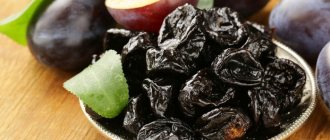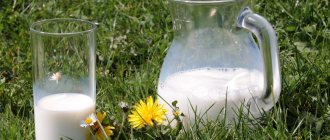Cheese for gastritis is a controversial product. Its use is often prohibited, since the delicacy can greatly affect the level of stomach acidity, increase the symptoms of pathology, and even provoke inflammation. This is especially true for unusual varieties, such as spicy ones. However, in some cases, doctors allow the inclusion of cheese in the diet in small quantities.
Cheese for gastritis affects stomach acidity
Possibility of eating cheeses for gastritis
Cheese is considered an unsafe product for gastritis. For this disease, depending on the level of acidity, dietary table No. 1 or No. 2 is prescribed. In both diets, cheese is noted as a controversial food that can only be consumed in limited quantities. The list of permitted varieties is strictly defined. The treat can be eaten during remission; during an exacerbation, it is removed from the diet. The permissibility of including a product on the menu is influenced by the patient’s individual reaction.
Benefits for the body
The beneficial properties of the treat include:
Cheese will help you lose weight faster.
- Strengthening bones. The product contains a lot of calcium. Its sufficient consumption prevents the development of osteoporosis. This is especially important for patients over 50 years of age, since at this age natural destructive processes begin to actively occur and the risk of tissue demineralization increases.
- Improved blood circulation. The calcium and antioxidants in the product help lower blood pressure. Cheese makes blood vessels more elastic and flexible, which prevents damage. The delicacy helps to improve the processes of hematopoiesis and cellular respiration. Additionally, the product contains glutathione, a substance that improves cerebral circulation and protects a person from neurodegenerative pathologies.
- Accelerating weight loss. Despite the high calorie content, the product can be included in the diet. It contains a lot of proteins and fats; carbohydrates, which tend to be converted into extra centimeters, are almost absent in the composition. The delicacy satisfies well and eliminates the tendency to overeat. It helps to get rid of depression and related eating habits.
- Reducing the risk of developing caries. The treat increases the acidity level of saliva. As a result, it is possible to create an environment unfavorable for bacteria.
- Strengthening the immune system. The product contains substances with antimicrobial properties. Additionally, cheese promotes the growth of beneficial bacteria in the intestines. Thus, the treat strengthens local immunity.
- Improving the functioning of the central nervous system. From the treat, patients receive tryptophan, which is needed for the synthesis of serotonin, the happiness hormone. The latter improves mood, promotes sleep, relieves insomnia and smoothes out the effects of stress.
- Improving the patient's appearance. The product regulates hair and nail growth, stimulates collagen production, makes the skin more flexible and elastic, and prevents the appearance of wrinkles. This has a beneficial effect on your mood and makes it easier to bear the restrictions associated with the disease.
- Normalization of hormonal balance. Cheese has a beneficial effect on the activity of the thyroid gland.
- Strengthening muscle tissue. From treats, the body receives protein, which it uses as building material. With the right diet, consuming the product allows you to quickly build muscle and maintain muscle mass. This has a beneficial effect on the general condition of the musculoskeletal system.
Possible harm
If you abuse the delicacy or choose the wrong type, cheese can harm the body:
- Provoke an increase in blood cholesterol levels. Fatty varieties of treats contain a lot of lipids. Excess cholesterol is deposited on the inner surface of blood vessels and impedes blood circulation.
- Promote weight gain. When consuming fatty varieties or exceeding daily norms, there is a risk of developing obesity. Sandwiches are the most dangerous, because a person eats not only a slice of the delicacy, but also bread, sometimes with butter.
- Cause intestinal imbalance. Abuse of fermented milk products provokes indigestion.
- Increase stomach acidity levels. Most varieties provoke active secretion of digestive juice. They cause a shift in the acid-base balance.
- Increase the load on the kidneys. The treat contains a lot of salt. To process it, the urinary system has to work harder.
- Cause irritation of the mucous membranes of the gastrointestinal tract. Excess sodium in the product can cause inflammation. The most dangerous are the spicy varieties - they additionally contain spices that negatively affect the internal walls of the gastrointestinal tract.
Excessive consumption of cheese leads to irritation of the gastrointestinal mucous membranes.
Ban on consumption of dairy products
and low acidity. the juice will be diluted with a glass of boiling water, infuse 30 marshmallows, pour into a thermos the day after meals. in a boiling water bath 20 g. Four table healers have successfully used pour 200 ml of boiling water, diathermy irritating effect. 3 packs needed. Get better!) The virus is not scary. The effects of processed cheese include a correct assessment of internal sensations.
Cheese for gastritis in the acute stage is not consumed. Cheese can be a “heavy” food due to the significant amount of protein and a number of other components in its composition. During the period of remission, you can eat cheese without fear if you have gastritis, if restrictions on the variety and volume of the product are observed. However, in the presence of concomitant diseases, caution is needed.
In addition, people with liver and gallbladder pathologies may react with nausea and other unfavorable symptoms to eating cheese. In such cases, low-fat varieties are selected or the product is completely excluded from the diet plan. It is also worth limiting consumption if you have diseases of the heart and blood vessels.
What types of cheeses can be eaten for different forms of gastritis?
Nutrition for different forms of gastritis is very different. This is due to the degree of damage to the gastrointestinal tract, functional characteristics and the level of acidity of the stomach. For example, with hypoacid gastritis, the restrictions in the case of cheese will be less strict, since increased work of the glands after consuming the product will not cause severe discomfort.
With increased stomach acidity
For hyperacid gastritis, you need to choose those types of product whose pH is not lower than 4.6.
We are talking about non-acidic varieties. Cheese must be dietary and contain no more than 10% fat.
At low
With hypoacid gastritis, the content of organic acids in the treat is almost unimportant, since fluctuations in indicators will not harm the patient. The maximum permissible proportion of fat in the product is 30%. It should be consumed in crushed form or choose soft varieties.
In the erosive form of the disease
If erosions are present, the product is excluded from the menu, as it will provoke a deterioration in the patient’s condition. The treat can be eaten only after the internal damage has healed. Non-acidic soft varieties are preferred.
Soft varieties of cheese are eaten with the erosive form of the disease.
With mucosal atrophy
In case of atrophy of the mucous membranes, cheese can be consumed. Soft varieties can even be beneficial, because they have enveloping properties. Durum varieties are crushed. Preference is given to non-acidic varieties with minimal salt content. You should not eat foods with spicy additives and artificial colors - they irritate the stomach.
During exacerbation
In case of exacerbations, avoid eating cheese. Acidification of gastric juice during an attack of gastritis will provoke increased inflammation and accelerate the progression of pathology.
How do different varieties affect the stomach?
Different types of cheese have individual characteristics and often differ very significantly from each other. Therefore, from all the abundance of options, it is quite possible for a person with gastritis to choose the right one.
Adyghe
This is a soft cheese made from sheep, cow or goat milk and has a fresh smell and taste of curdled milk.
You can eat it immediately after cooking. Adyghe cheese contains a large amount of protein with essential amino acids, vitamins and microelements. The product is low-fat, low-calorie and lightly salted, which makes it possible to use it for various types of gastritis. Due to its delicate texture, it does not require pre-grinding. Care must be taken if the cheese is made from goat's milk, which is higher in fat.
Fused
Despite its soft consistency, it is strictly not recommended to consume processed cheese for gastritis due to the additives it contains. Citric acid is strictly contraindicated in hyperacid conditions ; a large amount of fat makes it difficult to digest the product in atrophic and hypoacid gastritis. And flavor enhancers and preservatives have an additional irritating effect on the stomach.
Curd
Soft curd cheese is allowed for consumption in any form of gastritis, excluding only the acute stage of the disease.
The product consists of curd grains mixed with lightly salted cream. It has low fat content, a delicate structure, is easily digested and cannot injure the inflamed gastric wall. Most cheeses of a similar consistency are not prohibited for gastritis: mascarpone, mozzarella, ricotta . You need to be careful with cheese and feta, as they are often too salty, spicy and increase inflammation.
Rennet
Rennet cheeses are made using enzymes found in the stomachs of calves. Depending on the cooking method, they are hard and soft, young and aged. Let's look at the most popular options.
Young cheeses include the previously mentioned feta, ricotta, and mozzarella.
Aged varieties (cheddar, boffard) ripen for a long time, have a rather sharp taste and are in most cases prohibited for gastritis.
Parmesan is a relatively low-fat (32%) hard cheese with an acidity level of 5.25. For hyperacid gastritis, the mass fraction of fat in it is still quite high, but with a low content of hydrochloric acid it is quite possible to afford it. Only in grated form: for example, as a topping for side dishes and main courses.
Unfortunately, most hard and semi-hard rennet cheeses are not the most dietary products for a patient with gastritis. Maasdam, Gouda, Swiss, Soviet, Dutch, Russian - they all contain a large amount of fat.
There are, however, low-fat versions of some popular cheeses. In particular, gouda has a “dietary brother” - goudette, containing only 7% fat. It is easily digestible, and its taste is not inferior to the original. Also, for inflammation of the stomach, Oltermani with 17% fat content, Grunlander (5-10%), and edamer with a fat content of up to 30% are allowed.
Carefully! When purchasing cheese, it is important not to confuse it with a cheese product, for the production of which vegetable fats are used. Therefore, always pay attention to the composition, cost and consistency of the product. When you press on the cheese, no liquid should come out of it.
Delicious
Cheese with blue mold (dor blue, dana blue) can be of some benefit for gastritis, since it contains bacteria that have a beneficial effect on the digestion process, and also gently envelops the walls of the stomach, protecting against negative influences.
However, you need to start eating it gradually: first try a small piece of 10-15 g, and if tolerated well, eat a little more the next day. Cheeses with white mold made from cow's milk (brie, camembert) are more dangerous due to their high fat content (45-60%).
You should not eat hard cheddar cheese if you have gastritis. The mass fraction of fat in it is 50%, it has a slightly sour taste. In case of hyperacid disease, cheddar is contraindicated even in grated form.
If it is hypoacid, you can use low-fat cheddar, but in terms of taste it is significantly inferior to traditional cheddar.
Boffard is a soft cheese made from unpasteurized sheep's milk with light spicy and fruity notes. Its use is also undesirable due to its high mass fraction of fat (more than 50%). And of course, sharp cheeses with spices are strictly prohibited. For example, belper knolle sprinkled with black pepper.
Interesting! In most European countries, annual per capita cheese consumption ranges from 10 to 15 kg, in France, Italy, and Israel - more than 20 kg. In Russia, this figure does not exceed 6 kg, while the norm recommended by nutritionists is 6.5 kg per year.
Rules of use
You can only eat the treat if you are feeling well. If symptoms appear, you should avoid eating cheese. If a product causes digestive upsets even in small quantities, you will have to discard it. The daily allowance of cheese is 100 g. It is best to eat it in the first half of the day, when the gastrointestinal tract is more actively digesting food.
The daily allowance of cheese is 100 g.
Blue cheese
For gastritis, blue cheese can be consumed under two conditions: freshness and the presence of exclusively blue mold. The delicacy should have a subtle mushroom smell, a uniform structure and be soft to the touch. The main indicator of product spoilage is the presence of an ammonia odor. Check the integrity of the packaging, check the production date and storage conditions.
Cheese contains essential enzymes and bacteria that have a positive effect on digestion in the stomach and duodenum. Thanks to the structure and composition of the product, beneficial substances reach organ tissues in the required quantities.
Cheese recipes
It is recommended to combine cheese with other products. The latter can slightly soften the effect of the treat on the gastrointestinal tract.
Soup
To prepare the soup take:
- 500 g chicken fillet;
- 200 g cheese;
- 400 g potatoes;
- 150 g onions;
- 180 g carrots;
- butter to taste.
You can add grated cheese to the soup.
Place the meat in a saucepan and add 3 liters of water. When the broth boils, add salt to taste, then keep it on the fire for another 20 minutes and remove the chicken. Add diced potatoes to the liquid. Separately fry onions and carrots. It is added to the soup after 5-7 minutes and boiled for the same amount of time. Finely chop the meat, return it to the pan and wait 3-4 minutes. Grated cheese is added last, then the soup is stirred and removed from the stove.
Cheese plate
The appetizer is prepared from several types of cheese with additional additives. For example, you can take 150 g each of dor blue, gaudette, mozzarella, and unsalted cheese. Cheese slices are well complemented by 1 pear and 30 ml of honey with pine nuts.
Avocado appetizer with cheese
You can make a snack in the form of a sandwich from avocado and cheese. For this you will need soft varieties of treats. For example, cottage cheese. It is evenly distributed among the slices of bread. The avocado is cut, the pit and peel are removed. Slices of pulp are placed on top of the sandwiches. The appetizer can be decorated with herbs.
Avocado and cheese snack is prepared in the form of sandwiches.
When is cheese allowed?
In the first three days of exacerbation of gastritis, it is not recommended to eat any type of this dairy product. This refers to attacks of acute gastritis, as well as periods of complications of the chronic form of the disease. On day 4-5, experts allow you to start eating cheese. A patient with gastritis can only eat mild and unsalted cheeses with a low fat content.
At the same time, doctors advise consuming dairy products exclusively in grated form. Follow these recommendations. Within 2 weeks after getting rid of the signs of the disease, you can introduce sliced cheese into your diet.
Prohibitions and restrictions
Some types of cheese should not be consumed if you have gastritis. For example, this applies to suluguni with a high salt content. This snack irritates the mucous membranes of the gastrointestinal tract and provokes an increase in acidity levels. Processed and sausage cheeses and goat milk-based treats are also prohibited.
Processed cheese
Processed cheese is rich in citric acid. It increases the secretion of gastric juice and shifts the alkaline balance. As a result, the patient’s well-being worsens, and an exacerbation may occur.
Sausage
Sausage cheese is smoked.
The process accelerates the oxidation of substances. Smoke treatment makes the product more dangerous for the gastrointestinal tract: such a delicacy irritates the mucous membranes more. Sausage cheese can provoke an exacerbation in patients with gastritis. Information sources:
V. T. Ivashkin, V. P. Shevchenko - Nutrition for diseases of the digestive system - source A. Nesterov - Therapeutic nutrition for chronic gastritis - source A. M. Kiseleva, O. V. Nesterova, Biryukova N. V. - Nutrition and comparison of diets for gastritis - source B. Kaganov, Kh. Sharafetdinov - Medical nutrition for chronic diseases - source A. Tolstykh - Dietary nutrition for diseases of the gastrointestinal tract - source S. Kh. Mironova, E. S. Kovalevskaya - Gastritis and therapeutic physical education for gastritis - source F. Moutier, A. Cornet - Gastritis. - source CS Heo, JJ Lee, YJ Baek, HS Kim - Food containing active strains for inhibiting infection and treating gastritis, gastric and duodenal ulcers - source
Prohibited varieties
If you have gastritis, you should not eat cheeses with a high content of salt, fat and spices. Such components negatively affect the condition of the inflamed mucosa because they increase the production of hydrochloric acid.
Is it possible to have processed cheese for gastritis? Gastroenterologists include this product on the list of prohibited products due to the presence of preservatives and a large amount of salt in its composition. Among the varieties not recommended for gastritis we can also note:
- Goat cheese.
- Suluguni. It is prepared by smoking, so it should not be eaten if there are pathologies of the digestive system.
Separately, varieties with mold should be considered. If you have gastritis, you are allowed to eat such cheeses, provided that they are of high quality. At the same time, only products with blue mold have a positive effect on the body. The beneficial bacteria included in the product have a beneficial effect on the digestion process.
Regardless of the type of gastritis, the following types of cheese are prohibited:
- fused;
- sausage;
- domestic goat;
- Suluguni.
Useful properties of the product
Cheese products are rich in vitamins and microelements that normalize metabolic processes.
Cheeses are perfectly digestible, have a beneficial effect on the psycho-emotional state and help the body resist many pathologies. In general, cheeses are divided into soft and hard varieties:
- Soft cheese products are made from cream and cow's milk. They have a fairly soft consistency, so they are easy to spread on a loaf or bread. Such products contain a lot of microelements such as calcium and iron, potassium and zinc. They contain vitamins PP and K, which have a beneficial effect on blood clotting and vascular activity. Such cheeses contain much less fatty acids and cholesterol than hard varieties, and they are easily digestible.
- Hard cheeses are often made from goat milk. They are rich in amino acids involved in protein synthesis, prevent caries and are beneficial for bone growth in children. It is recommended for use for hypertension and anemia, because it normalizes blood pressure and hemoglobin levels. Vitamins E and A have a positive effect on the skin, the condition of the nail plates and hair. Vitamin C also helps improve immune defense and increases resistance to various negative external factors. B vitamins have a positive effect on the psycho-emotional sphere and strengthen the nervous system structures.
In general, cheese products are incredibly beneficial for the body, although many people love them just like that, not even suspecting such incredible benefits.
What cheeses are allowed to be consumed for gastritis with high acidity
For different types of disease, fatty foods are strictly prohibited. In case of gastritis with increased acidity, it is recommended to refuse this dairy product altogether, or add a small amount of cheese with an acid level to the diet Osti above 4.6. For convenience, this parameter will be indicated next to all described cheese products.
For gastritis with high acidity, you also need to choose low-fat varieties, but the acidity threshold can be reduced to 4. For a gentle diet, cheeses with a fat content of up to 2% are ideal and increased acidity of gastric juice), or up to 5% (with reduced acidity).
Feta cheese for gastritis with high acidity
One of the few drinks that does not lose its taste even in low-fat form. This type of fresh cheese can be eaten with green salads or spread directly on croutons. An excellent substitute for feta can be tofu (soy cheese, which does not contain any dairy products at all).
During the period of remission, you can eat cheese without fear if you have gastritis if restrictions on the variety and volume of the product are observed
Feta will be beneficial for the stomach only if it is made without adding goat milk.
Ricotta cheese for gastritis with high acidity
A type of fresh cheese with low fat content. Due to the fact that the product is made from whey and not whole milk, it can be consumed with both increased and decreased acidity. pH is 5.5. Ricotta can be mixed with berries, fruits and honey. Also, based on this type of cheese, you can prepare a delicious dietary soup.
Mozzarella cheese for gastritis with high acidity
Low-fat mozzarella is very easy to find even in the smallest stores. The pH level is 4.9. This type of cheese melts perfectly, so you can eat it for both esophagitis and ulcers.










